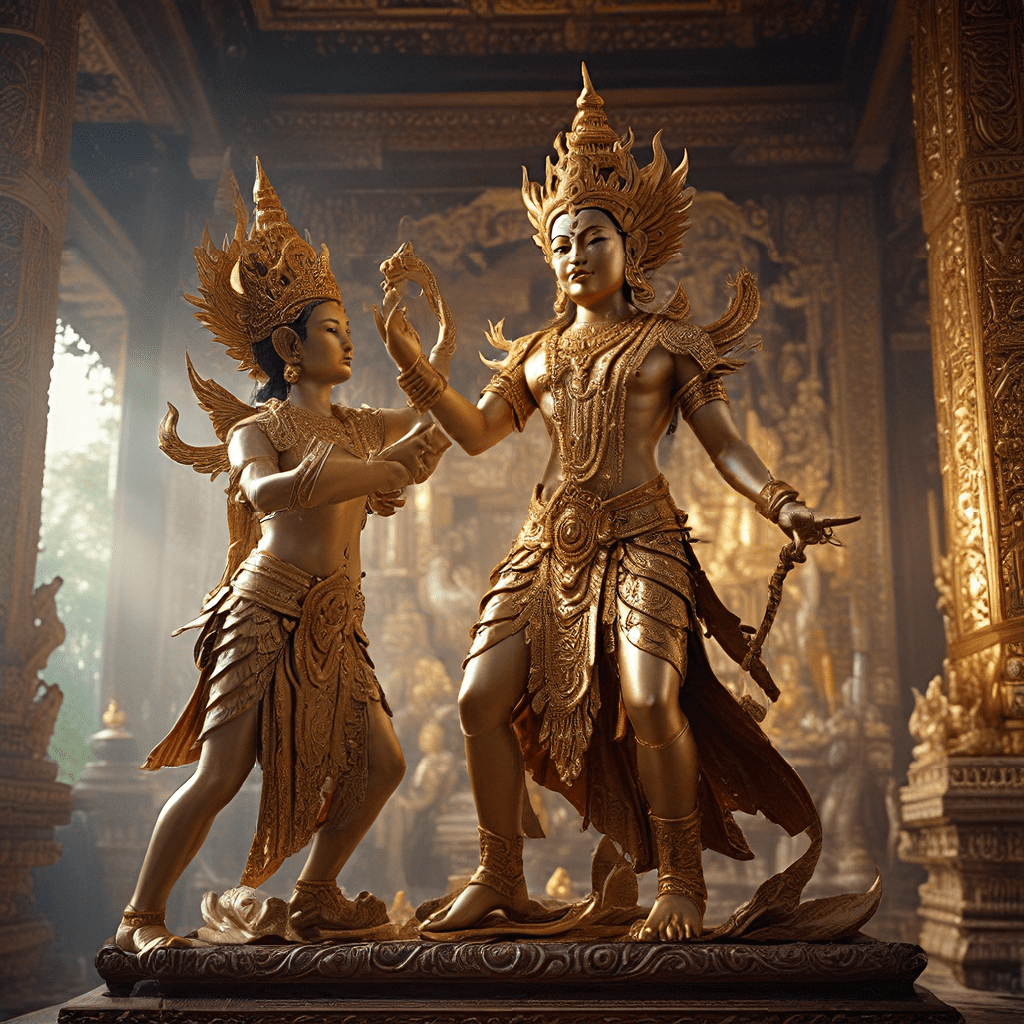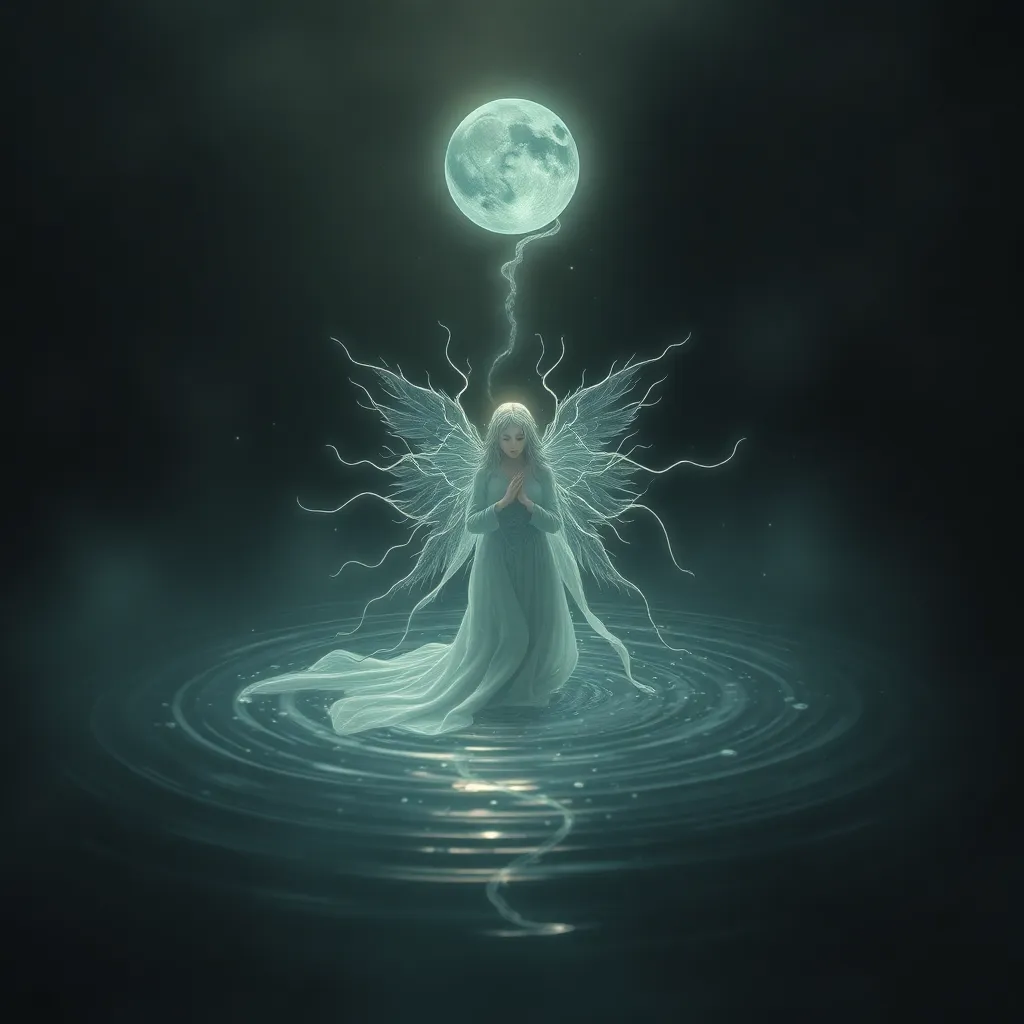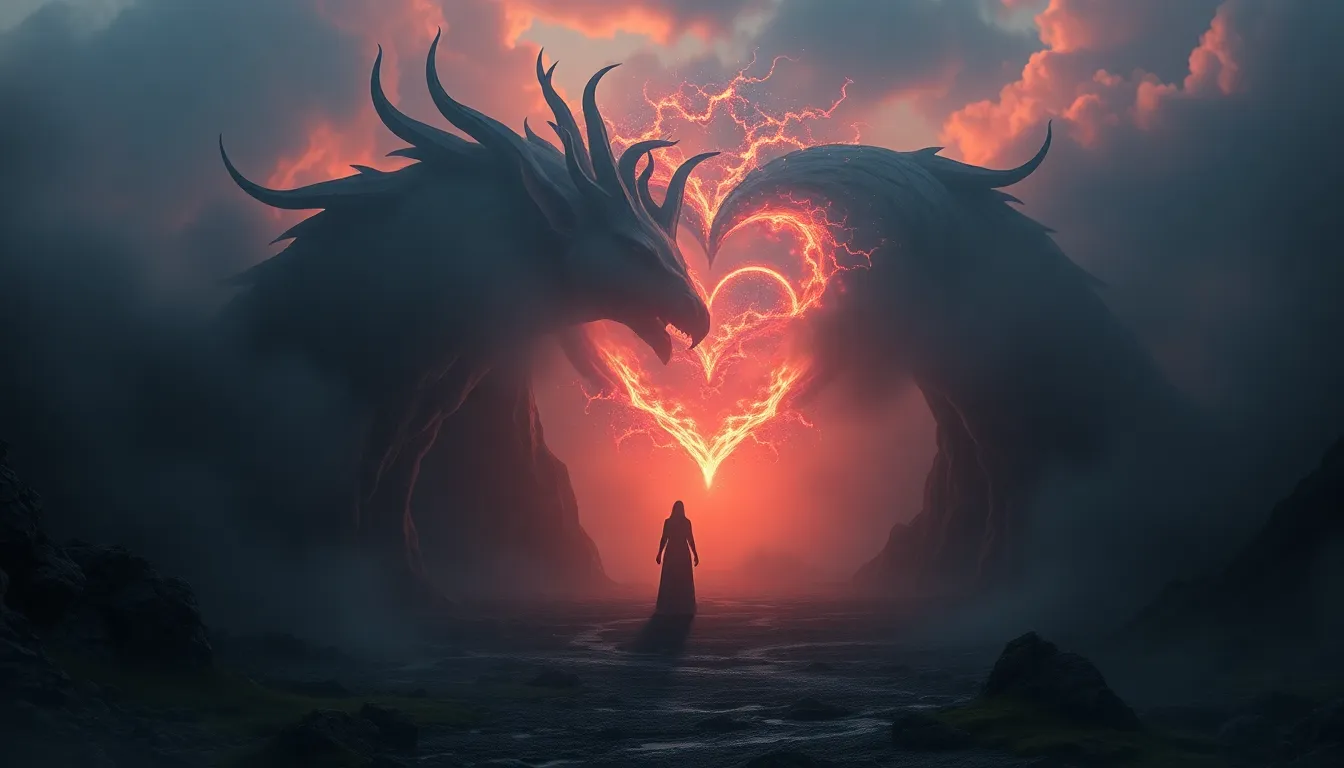Thai Mythology in Contemporary Literature and Art
I. Introduction: A Timeless Tapestry
Thai mythology, a rich tapestry woven with gods, spirits, and mythical creatures, has captivated the Thai people for centuries. These ancient stories, passed down through generations, offer a glimpse into the cultural heart of Thailand, revealing its values, beliefs, and understanding of the universe. Today, Thai mythology continues to inspire artists and writers, finding new life in contemporary literature and art, where ancient narratives are reinterpreted and reimagined through modern lenses.
II. The Genesis of Thai Mythology: From Ancient Beliefs to Modern Expression
The roots of Thai mythology are deeply entwined with the beliefs of ancient civilizations that inhabited the region. Early beliefs centered around animism, the worship of nature spirits, and ancestor veneration. The influence of Hinduism, Buddhism, and other cultural influences over the centuries has enriched the mythology, weaving together a complex tapestry of gods, goddesses, and mystical creatures.
The arrival of Buddhism in Thailand in the 3rd century BCE further shaped the mythology, introducing the concepts of karma, reincarnation, and the pursuit of enlightenment. However, Thai mythology didn't simply absorb these new beliefs; it blended them with existing traditions, creating a unique and vibrant mythology that is both ancient and modern.
III. The Cosmic Dance of Gods and Spirits: Key Deities and Creatures in Thai Mythology
The Thai pantheon is a diverse one, populated by powerful gods, benevolent spirits, and fearsome mythical creatures. Each deity and creature holds a distinct role in the grand narrative of Thai mythology.
The Trimurti: Brahma, Vishnu, and Shiva
The Trimurti, the three main Hindu gods, Brahma, Vishnu, and Shiva, play significant roles in Thai mythology. Brahma, the creator god, is associated with knowledge and creation. Vishnu, the preserver god, is depicted as a protector of righteousness and is often portrayed as a blue-skinned deity riding a mythical bird called Garuda. Shiva, the destroyer god, is known for his fierce nature and is often associated with death, transformation, and the cycle of life.
The Guardian Spirits: Yaksha, Naga, and Kinnara
The guardian spirits of Thai mythology protect the land, the people, and the sacred places. Yakshas, powerful nature spirits, are often depicted as guardians of forests and mountains. Nagas, serpent-like beings, are associated with water and are often depicted holding a jewel known as the "naga gem." Kinnaras, half-human, half-bird creatures, are known for their beauty, grace, and musical talents.
Mythological Creatures: Garuda, Hanuman, and Krai
Mythical creatures like Garuda, Hanuman, and Krai play significant roles in Thai folklore and literature. Garuda, a giant bird-like creature, is often depicted as Vishnu's mount. Hanuman, a monkey god, is known for his strength, intelligence, and devotion to Rama. Krai, a supernatural being, is often depicted as a fierce warrior and is associated with protection.
IV. Contemporary Literature: Echoes of Myth in the Written Word
Thai mythology has long been a source of inspiration for writers, influencing their themes, characters, and narratives. The blend of ancient beliefs with modern concerns makes it a rich wellspring of creative expression.
Folklore and Mythology as Inspiration: Novels, Poems, and Short Stories
Contemporary Thai writers draw heavily on folklore and mythology in their works. They employ these ancient stories as a foundation for exploring modern themes, weaving contemporary issues like social injustice, environmental concerns, and identity into the fabric of myth.
The Role of Myth in Themes of Identity, Tradition, and Modernity
Mythology provides a lens for understanding Thai identity and its relationship to tradition and modernity. Contemporary writers examine the ways in which ancient beliefs intersect with the challenges and opportunities of the modern world. They explore the complexities of preserving cultural heritage while embracing new ideas and technologies.
Contemporary Authors and their Exploration of Thai Mythology
Many contemporary Thai authors have made significant contributions to the exploration of Thai mythology in literature. Authors like [Author Name], known for their [Genre], utilize mythological themes to explore social and political issues. [Author Name] incorporates elements of mythology into their [Genre] to address the impact of globalization on tradition. [Author Name] employs mythology as a framework for exploring the human condition, adding a layer of depth and meaning to their works.
V. Contemporary Art: Visual Representations of Mythological Narratives
Thai mythology has also captured the imaginations of contemporary artists, who are reinterpreting ancient narratives through a variety of artistic mediums. They are offering fresh perspectives on traditional stories and exploring the enduring relevance of these myths in a modern world.
Painting, Sculpture, and Installation Art: Modern Interpretations of Ancient Legends
Thai artists are using painting, sculpture, and installation art to reinterpret ancient legends. They employ traditional techniques alongside contemporary styles, blending ancient narratives with modern sensibilities. This fusion of styles creates a dialogue between past and present, illuminating the enduring power of mythology.
The Use of Mythological Imagery in Contemporary Art Movements in Thailand
Mythology is central to many contemporary art movements in Thailand. Artists utilize mythological imagery to address social, political, and environmental issues. They use these ancient symbols to represent the complexities of Thai culture, challenging viewers to consider the past in the context of the present.
The Fusion of Traditional and Contemporary Styles in Art
Contemporary Thai artists are blending traditional styles, like [Specific Art Style], with contemporary art movements, like [Specific Art Movement], to create a unique and dynamic artistic language. This fusion allows them to reinterpret ancient mythology in a fresh and relevant manner, appealing to a wider audience while staying true to the essence of their cultural heritage.
VI. The Role of Mythology in Shaping National Identity
Thai mythology is more than just a collection of stories; it's a vital component of Thai national identity. It embodies the values, beliefs, and worldview of the Thai people, weaving together a tapestry of cultural heritage that spans generations. These myths are a source of pride, reminding Thais of their shared history and traditions, and fostering a sense of belonging within a larger cultural context. Through these tales, Thai people connect with their ancestors, understanding their past, and gaining insight into their own place in the world.
Many of these myths center around the concept of dharma, or righteousness, which emphasizes virtuous behavior, the pursuit of justice, and the importance of upholding moral principles. These values are deeply ingrained in Thai culture, shaping social interactions, ethical decision-making, and the concept of good governance. Mythological figures like Phra Phrom, the creator god, and Phra Narai, the preserver god, exemplify these ideals, reminding people of the importance of moral conduct and ethical leadership.
These myths also play a crucial role in shaping the Thai understanding of the natural world. Stories about Nagas, serpentine spirits who guard water sources, and Yakshas, mystical guardians of forests, reflect a deep reverence for nature and the belief in the interconnectedness of all things. These myths highlight the importance of respecting the environment and living in harmony with it.
VII. The Intersection of Myth and Modernity: Challenges and Opportunities
The modern world presents both challenges and opportunities for Thai mythology. Globalization, rapid urbanization, and technological advancements have led to a shift in values and perspectives, raising questions about the relevance of traditional beliefs in a fast-paced world.
One challenge is the potential for the erosion of traditional knowledge and cultural practices. As younger generations become increasingly immersed in a globalized culture, the importance of preserving ancient myths and stories might be overlooked. There is a risk that these valuable traditions, passed down through generations, could be lost or forgotten, leaving a void in cultural understanding.
However, alongside these challenges, there are also opportunities to reimagine and revitalize Thai mythology in contemporary contexts. Modern artists and writers are exploring the depths of these ancient stories, reinterpreting them through new lenses and creating fresh connections to contemporary audiences.
VIII. The Future of Thai Mythology in Art and Literature: A Lasting Legacy
The future of Thai mythology in art and literature is bright. As artists and writers continue to explore the boundless depths of these ancient narratives, they are creating a bridge between the past and the present, ensuring that these stories continue to resonate with audiences for generations to come. They are also highlighting the value of these ancient traditions, promoting cultural preservation and ensuring their continued relevance in a globalized world.
While Thai mythology provides a framework for understanding the past, it also offers a roadmap for navigating the future. These stories offer wisdom and guidance for overcoming challenges, fostering a sense of collective identity, and navigating the complexities of a rapidly changing world.
IX. The Continued Relevance of Thai Mythology in a Globalized World
Despite the challenges posed by globalization, Thai mythology remains remarkably relevant in a modern world. The timeless themes of human nature, morality, and the search for meaning continue to resonate with audiences across cultures.
Stories about the Garuda, a divine bird that fights against evil, offer inspiration for overcoming challenges and achieving personal triumphs. The tale of Hanuman, a monkey god known for his unwavering loyalty, reminds us of the importance of faithfulness and perseverance. These themes resonate deeply with people regardless of their cultural background, highlighting the universal appeal of these myths.
Moreover, Thai mythology can play a crucial role in fostering cultural understanding and appreciation. These stories offer a window into the rich cultural heritage of Thailand, promoting cross-cultural dialogue and empathy. By sharing these tales, we can bridge cultural divides, fostering a greater understanding and appreciation for the diversity of human experience.
FAQ
Q: What are some key deities in Thai mythology?
A: Some key deities include Brahma, the creator god; Vishnu, the preserver god; Shiva, the destroyer god; and Phra Phrom, the creator god in Thai Buddhist tradition.
Q: How does Thai mythology connect to Thai national identity?
A: It's a core part of Thai culture, reflecting their values, beliefs, and worldview, fostering a sense of shared history and tradition.
Q: What are some challenges facing Thai mythology today?
A: Globalization, urbanization, and technological advancements can lead to the erosion of traditional knowledge and practices.
Q: What are some opportunities for Thai mythology in the future?
A: Reimagining these stories through modern lenses in art and literature can help preserve and revitalize them for future generations.
Q: How can Thai mythology foster cultural understanding in a globalized world?
A: Sharing these stories can bridge cultural divides, promoting empathy and appreciation for the diversity of human experience.



